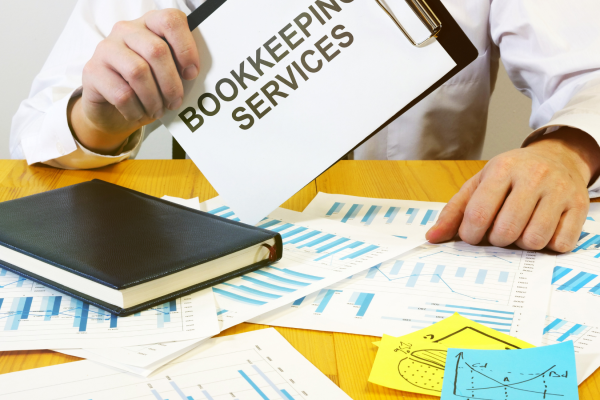Are you having trouble with acquiring capital for your small business?
You should look into asset financing. This is when your company provides information regarding its assets to secure financing. These assets can include accounts receivable, inventory, and short-term investments.
This is a great way to secure a loan to grow your business. It’s a way to present your company as fiscally responsible as well.
So what else should you know about asset financing? How do you secure asset financing for your business?
Here’s what you need to know:
The Process of Asset Financing
There are several ways to secure asset financing for your business. You can learn more about using asset financing services here.
You can first borrow money for an asset you wish to acquire. Once you pay off this loan, the asset is fully yours. You can hold onto the asset as you’re paying the loan, but you don’t receive full ownership until it’s paid off.
You can also choose the equipment leasing option. With this option, the lender buys an asset that you need. You pay them a rental fee to use the asset. Once you’ve paid off the price of the asset, it’s yours to keep.
The final option is asset based finance. This is when you receive a loan and use your assets as collateral. In such situations, the lender usually gives you 80% of the asset’s value as a loan. This is a great way to bring in cash for your business.
How Long Does Asset Financing Last?
As a general rule, asset financing lasts between 1 to 7 years. There are also short-term asset finance options that run under a year.
The length of time depends on the value of the assets. It also depends on how long the asset is considered to be ‘usable.’
Your lender might also set their deadlines of when they’ll want their money back. You’ll have to negotiate how much you’ll pay them each month until you pay off the loan.
As such, you want to make sure you have enough capital flowing into your company to pay off the loan. In most cases with asset finance terms, you’ll be expected to pay interest on top of your loan.
Why Bother About Asset Financing?
So why should you consider asset financing for your small business?
For many small businesses, you’ll have to ensure that you maintain your cash flow. As such, it might not be the best idea to make payments upfront.
For example, you might need to buy a new laptop for your business. Let’s suppose the laptop costs around $2,500. You might have no problem paying this amount upfront.
But what if you have to pay $100 per month for web hosting fees? What if you need to spend around $1,000 per month to pay your staff? How much will $2,500 cut into your budget?
You might find that your business bank account total will drop significantly! You might then struggle with building your capital each month and get back to a sustainable level.
As such, asset financing is a great way to buy an asset without having to put a strain on your bank account. It’s also ideal for receiving capital without having to go to a traditional lender.
Asset Refinancing
Another aspect of asset financing is asset refinancing. This is when your lender can finance any product that’s crucial to your business. It also has to be a removable product so that it can get taken as a security.
This is similar to the process of requesting a small business loan from your bank. However, in such a scenario, the bank assesses your credit score to determine whether you’re eligible for a loan.
With asset refinancing, the lender will place a value on your pledged assets. They’ll offer you a loan based on the value of these assets.
With this option, you want to make sure you can easily pay back the loan before handing over your assets. It’s possible to lose access to your assets if you don’t repay your loan.
Nevertheless, this is a popular option for many small businesses. It’s a great way to get a loan and the terms are often favorable for both parties.
Best Practices
So what are the best practices that you need to know if you want to consider asset financing for your business?
The first step is to ensure you’ll have enough capital to pay off a loan. You’ll have to pay a loan plus interest in most cases.
For example, let’s say you want to finance a laptop worth $2,500 as mentioned previously. You might find a lender who is willing to buy the laptop but charges interest of $500 to the loan. They’ll also expect to receive the loan back in 12 months.
In total, you’ll have to pay $3,000 within one year. This means you’ll have to pay $250 each month to remain compliant. You want to make sure you have this amount saved up to pay off your loan. You might wish to put aside $250 each month to a savings account to avoid spending it.
If you want to receive finances for your assets, you want to ensure that you maintain them well. Any asset that’s in poor condition will not receive financing.
Make sure you don’t give up an asset that you need regularly. In some cases, offering your assets as security means that you’ll rent them until you pay off your loan.
You’ve also got to keep your expenses as low as possible so that you have no issues with paying off loans!
Opt for Asset Financing
Now you can opt for asset financing for your business. This is one of the best methods of building capital for your company without breaking the bank!
You can first choose what process of asset financing works best for your needs. You can use asset financing to buy an asset that you need for your business. Or you can use your current assets as collateral for a cash loan.
Make sure you have enough initial capital in your company to pay your lender. This is a great way to keep your startup running during its early stages.
You can find more financial content on our website!





